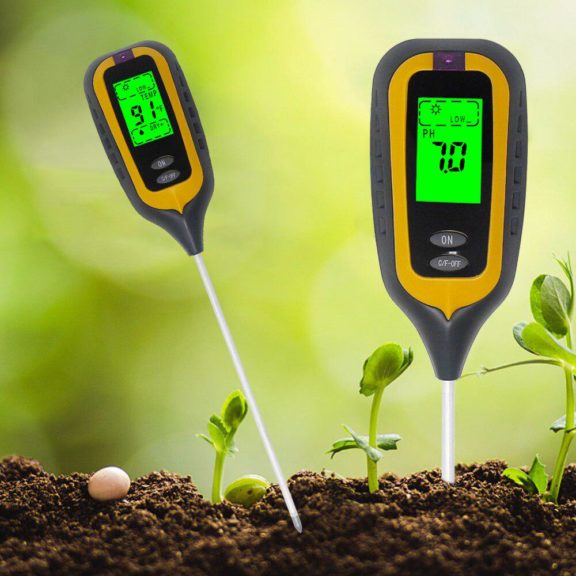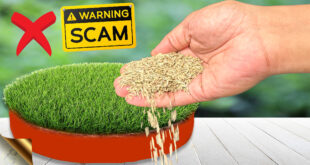In Today’s very important post, we will look into DIY season wise vegetable planting calendar which works in any zone you live in, anywhere in the world. The importance of Soil temperature for planting, how to measure soil temperature using a thermometer and also using your smart phone and other hacks.
We all know the importance of planting right seeds in the right season for best results. Planting in the wrong season can result in poor seed germination, stunted plant growth, diseased plants and a very bad harvest.
Some Vegetables and fruits grow only in certain Temperatures, Humidity, and Soil PH levels, so it is critical to know which season is compatible to grow a particular plant. But, this growing calendar or the seasons are not constant and this varies throughout the world and varies from zone to zone. Hence, in this episode, we will learn how to make your own vegetable planting calendar and start vegetable planting or seed sowing based on the Soil Temperature. Do not worry, it’s not at all complicated. But this is actually very important. You may also have some questions in mind, like why only soil temperature and why not air temperature? We will answer everything in this episode in an interesting Q & A Format.
- What is Soil temperature?
Soil temperature is simply the measurement of the warmth in the soil. Night time and daytime soil temperatures are both equally important. It’s measured in Degrees Fahrenheit or Degrees Centigrade or Celsius depending on where you live. - What Gadgets you need to measure Soil Temperature?
Obviously you need a thermometer to measure temperature. Soil thermometers are not expensive. There are many types of soil thermometers available. You can use any thermometer with a long probe to measure the soil temperature, including this type of food or milk thermometer. This is really cheap and available online – you can check a link to buy it online from description below. You can also use this type of all in one gadget which measures PH, moisture and temperature.


How to Measure Soil Temperature?
For seed starting, you insert the probe 1 to 2 inches deep to check the readings. Whereas for transplants or for other plants, You need to insert the probe 2 to 4 inches deep or even more and then keep it in soil for about 2-3 minutes to get the right reading. You can also repeat multiple times and take average of all readings. One simple tip here: Do not press your thermometer harder to make it into the soil, especially if soil is harder. You can use a screw driver to make a hole into the soil and then insert the thermometer.
What time of the Day should I measure?
Soil temperature is best taken in the early morning when the soil is coolest and not yet warmed under the day’s sun.
- Why Not Air Temperature?
This is because, the relationship between soil temperature and air temperature is not fixed and varies in different seasons. Like in early spring, the soil temperature is lower than the air temperature and then in summer, its higher than the air temperature. If you know this concept, then you can use your zone air temperature and roughly use the weather readings from your smart phone and use it as a baseline for planting your crops. - What Factors affect soil temperature?
The moisture content in the soil is the most important factor that affects soil temperature. Moist soils heat up slowly. Hence when you measure soil temperature, its better to insert the thermometer at least after 12 hours of watering the soil. Another factor which is actually used in many zones with unfavourable temperatures is the use of Green houses or poly houses to maintain temperatures ideal for seed germination and plant growth. - What is Workable Soil test?
Before soil thermometers were used in farming, the common method of determining when to plant was soil workability. This is the in fact an old fashioned method to roughly know when to plant.
The soil is workable and ready for seed sowing or planting if it passes the Workable Soil Test. Here’s the test: squeeze a handful of soil in the palm of your hand; when you open your hand if the soil remains a wet or very moist clump, it is not workable. Let the soil dry. If the soil crumbles from your hand with a touch, it is workable. - What is the ideal soil Temperature for most plants?
Each vegetable has a specific ideal temperature that’s favourable for seed germination and best results. Ideal soil temperature for planting should be 10 degree above the ideal minimum and 10 degree below maximum for that vegetable. We will show you the temperature chart for various vegetables at the end of this episode.
- Why Soil Temperature is important?
The right Soil temperature triggers not only seed germination but is an important factor in soil chemistry as well. Soil chemistry includes the release and absorption of mineral and nutrients in soil by the roots and this is so vital for plant resistance against pests and proper plant growth and maturation till the harvest. Now! - Let’s build our own Seed sowing or Vegetable Planting Calendar depending on the temperatures. You can classify this calendar in two ways:
A much broader way is to put them into two categories – like WARM CROPS or COOL CROPS or COLD CROPS.
One more method is to divide into seasons or even months from Jan to December, or like:
- Spring Vegetable planting
- Summer Vegetables
- Rainy season vegetables
- Winter season vegetables
If you want your very own perfect calendar for all these seasons, you might have to measure the soil temperatures at your local zone, yourself and then prepare this chart. This hard work is perhaps very important and saves your time and might yield best results in future.
So based on the Soil temperature charts for different vegetables, My season-wise or month wise planting calendar is like this: I will show you how to use the temperature chart for different vegetables to build this calendar in a short while from now.
Spring Season Vegetables: All Gourds – like Bittergourd, Bottle gourd, Sponge Gourd, Cucumbers, Beans, Okra, Watermelon, Lettuce, Spinach, and even Onions and carrots.
Summer Season Vegetables: Capsicum and Chilly – that’s all varieties of peppers, Coriander or cilantro, Tomatoes, Okra, Amaranthus, All Gourds, Cucumber, cauliflower, Brinjal and so on.
Rainy Season Vegetables: All gourds, All Beans, Cucumber, Okra, Tomato, Carrot, Cauliflower, Radish, Cucumber, Onion, Peas, Spinach, Peas, Lettuce and so on.
Winter season crops: Beet, Eggplant, Cabbage, Carrot, Beans, Lettuce, Okra, Turnip, pumpkins, Watermelon, Muskmelon, Ash gourd, Ridge gourd, Bitter gourd, Bottle gourd, Cucumber, Cabbage and so on.
You can DOWNLOAD this PDF temperature chart for various vegetables from a link in description below and build your own Zonal Garden Calendar for perfect Vegetable gardening.
 GKVKs – Gardening Tips and Store Gardening Tips and Store
GKVKs – Gardening Tips and Store Gardening Tips and Store



